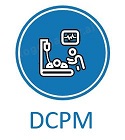Background: Health consumes ~10% of GDP in the OECD, and grows an unsustainable 7-11% per year, and is ~1% of GDP for intensive care alone, driven by chronic diseases and aging populations. Limited funding leads to an ‘equity gap’ in health funding, where more people go untreated, less treated (rationing), and/or rely on private insurance and care, creating and exacerbating inequality.
Problem: This labor intensive sector has not made productivity gains, and increasing demographic demand for intensive care is multiplied by a growing need for personalized, precision solutions to care.
Challenge: Reverse this trend by linking engineering, medicine, and industry to improve the quality, precision and productivity of intensive care, and create a template for other areas of care.
Objectives: Use model-based methods and novel system identification technologies to create validated virtual patient models for use in personalizing care to enhance its quality and productivity.
Proposed Solution: Tight collaboration between engineering research, clinical medicine, and industry to create, validate, and implement precision, intensive care medicine (DCPM) using in-silico virtual patients. The proposal authors are world-leaders in creating highly validated virtual patients, and translating them to clinical use to provide precision, next-generation productive, intensive care solutions. It will merge model-based methods in metabolic, cardiovascular and pulmonary systems – 3 leading causes of intensive care admission, mortality and cost - to create individual (and then combined) virtual intensive care patients to personalize care at the bedside. The consortia leverages significant research funding in 3rd country partners for model-based medical solutions. This proposed mobility optimizes this research for maximum social and economic impact in the EU and NZ – Doing medicine better via inter-disciplinary, in-silico solutions to productivity in intensive care.
For further details, see the Project Objectives!
